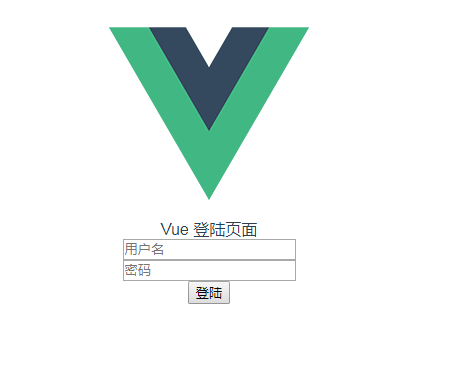前後端的結合
前言:前後端分離趨勢越來越明顯,分離的好處在於前後端可獨立進行開發進行,前端寫前端的代碼,後端寫後端的代碼,後端提供相應的數據接口提供給前端。本文采用的是Vue+springboot的結合,做了一個登陸的demo,主要是理解前後端如何結合在一起,這裏演示的爲前後端在各自的服務器上運行,可參考前後端分離之Vue(一)Vue環境搭建,建立Vue項目
一、後端服務器的開發
後端採用的是SSM的框架結構進行改造,將前端部分交由Vue看來完成,只負責請求處理。這裏只列舉變化的部分,不變的部分springboot搭建的SSM結構即可,具體後端代碼可參看https://github.com/dgyuanjun/SpringBoot-Vue.git
1.跨域的處理
import org.springframework.context.annotation.Bean;
import org.springframework.context.annotation.Configuration;
import org.springframework.web.cors.CorsConfiguration;
import org.springframework.web.cors.UrlBasedCorsConfigurationSource;
import org.springframework.web.filter.CorsFilter;
/**
* @author Administrator
* @create 2018/3/12-15:17
* @DESCRIPTION 跨域系統配置
*/
@Configuration
public class CorsConfig {
/**
允許任何域名使用
允許任何頭
允許任何方法(post、get等)
*/
private CorsConfiguration buildConfig() {
CorsConfiguration corsConfiguration = new CorsConfiguration();
// // addAllowedOrigin 不能設置爲* 因爲與 allowCredential 衝突,需要設置爲具體前端開發地址
corsConfiguration.addAllowedOrigin("http://localhost:8000");//前端的開發地址
corsConfiguration.addAllowedHeader("*");
corsConfiguration.addAllowedMethod("*");
// allowCredential 需設置爲true
corsConfiguration.setAllowCredentials(true);
return corsConfiguration;
}
@Bean
public CorsFilter corsFilter() {
UrlBasedCorsConfigurationSource source = new UrlBasedCorsConfigurationSource();
source.registerCorsConfiguration("/**", buildConfig());
return new CorsFilter(source);
}
}2.統一API響應結果封裝
import com.alibaba.fastjson.JSON;
/**
* @author Administrator
* @create 2018/3/12-14:31
* @DESCRIPTION 統一API響應結果封裝
*/
public class RestResult {
private int code;//狀態碼
private String message;//消息
private Object data;//數據
get.set方法
}3.響應碼的枚舉
/**
* @author Administrator
* @create 2018/3/12-14:33
* @DESCRIPTION 響應碼枚舉,參考HTTP狀態碼的語義
*/
public enum ResultCode {
SUCCESS(200),//成功
FAIL(400),//失敗
UNAUTHORIZED(401),//未認證(簽名錯誤)
NOT_FOUND(404),//接口不存在
INTERNAL_SERVER_ERROR(500);//服務器內部錯誤
private final int code;
ResultCode(int code) {
this.code = code;
}
public int code() {
return code;
}
}4.接口響應信息生成
import org.springframework.stereotype.Component;
/**
* 工廠模式
* 接口信息生成工具
* 。@Component 添加到Spring組件中
* Created by bekey on 2017/12/10.
*/
@Component
public class ResultGenerator {
private static final String SUCCESS = "success";
//成功
public RestResult getSuccessResult() {
return new RestResult()
.setCode(ResultCode.SUCCESS)
.setMessage(SUCCESS);
}
//成功,附帶額外數據
public RestResult getSuccessResult(Object data) {
return new RestResult()
.setCode(ResultCode.SUCCESS)
.setMessage(SUCCESS)
.setData(data);
}
//成功,自定義消息及數據
public RestResult getSuccessResult(String message,Object data) {
return new RestResult()
.setCode(ResultCode.SUCCESS)
.setMessage(message)
.setData(data);
}
//失敗,附帶消息
public RestResult getFailResult(String message) {
return new RestResult()
.setCode(ResultCode.FAIL)
.setMessage(message);
}
//失敗,自定義消息及數據
public RestResult getFailResult(String message, Object data) {
return new RestResult()
.setCode(ResultCode.FAIL)
.setMessage(message)
.setData(data);
}
//自定義創建
public RestResult getFreeResult(ResultCode code, String message, Object data) {
return new RestResult()
.setCode(code)
.setMessage(message)
.setData(data);
}
}具體代碼可參考:https://github.com/dgyuanjun/SpringBoot-Vue.git
二、Vue前端的開發
1.新建登陸頁面,在components裏,新建Login.vue
<template>
<div class="login">
{{ message }}
<input v-model="username" placeholder="用戶名">
<input v-model="password" placeholder="密碼">
<button v-on:click="login">登陸 </button>
</div>
</template>
<script>
export default {
name: "login",
data() {
return {
message: 'Hello Vue!',
username: '',
password: ''
}
},
http: {
headers: {'Content-Type': 'application/x-www-form-urlencoded; charset=UTF-8'}
},
methods: {
login: function () {
var _this = this;
console.log(_this.username+_this.password);
_this.$http.post('http://localhost:8080/person/login', {
username: _this.username,
password: _this.password
},{emulateJSON:true}
)
.then(function (response) {
var errorcode = response.data.code;
console.log(response.data.data)
if (errorcode == "200") {
_this.$router.push(
{ path: '/HelloWorld',
query: {
user: response.data.data,
}
});
} else {
_this.$router.push({ path: '/Test' });
}
})
.catch(function (error) {
console.log(error);
});
}
}
}
</script>
<style scoped>
</style>
2.新建登陸失敗的提示頁面Fail.vue,成功的頁面可採用原有的HelloWorld.vue
<template>
<div class="hello">
<h2>{{ msg }}</h2>
</div>
</template>
<script>
export default {
name: 'HelloWorld',
data () {
return {
msg: '登陸失敗'
}
}
}
</script>
<!-- Add "scoped" attribute to limit CSS to this component only -->
<style scoped>
h1, h2 {
font-weight: normal;
}
ul {
list-style-type: none;
padding: 0;
}
li {
display: inline-block;
margin: 0 10px;
}
a {
color: #42b983;
}
</style>
3.將組件添加到路由表中,在router下的index.js文件
import Vue from 'vue'
import Router from 'vue-router'
import HelloWorld from '@/components/HelloWorld'//組件的位置
import Login from '@/components/Login'
import Fail from '@/components/Fail'
Vue.use(Router)
export default new Router({
routes: [
{
path: '/',//系統的首頁面url
name: 'Login',
component: Login//對應上文的import
},{
path: '/HelloWorld',
name: 'HelloWorld',
component: HelloWorld
},{
path: '/Fail',
name: 'Fail',
component: Fail
}
]
})
4.main.js文件添加vue-resource,支持http請求,如果未安裝依賴包,先npm安裝依賴
$ npm install vue-resource// The Vue build version to load with the `import` command
// (runtime-only or standalone) has been set in webpack.base.conf with an alias.
import Vue from 'vue'
import App from './App'
import router from './router'
import VueResource from 'vue-resource'
Vue.use(VueResource);
Vue.config.productionTip = false
/* eslint-disable no-new */
new Vue({
el: '#app',
router,
components: { App },
template: '<App/>'
})三、測試效果
1.登陸頁面
2.成功後顯示後臺數據信息
3.登陸失敗
四 源碼地址
Vue源代碼地址:https://github.com/dgyuanjun/Vue-SpringBoot.git
SpringBoot源碼地址:https://github.com/dgyuanjun/SpringBoot-Vue.git
相關鏈接
前後端分離之Vue(一)Vue環境搭建 http://blog.csdn.net/shenbug/article/details/79541218
前後端分離之Vue(三) Vue爬過的那些坑 http://blog.csdn.net/shenbug/article/details/79547171



